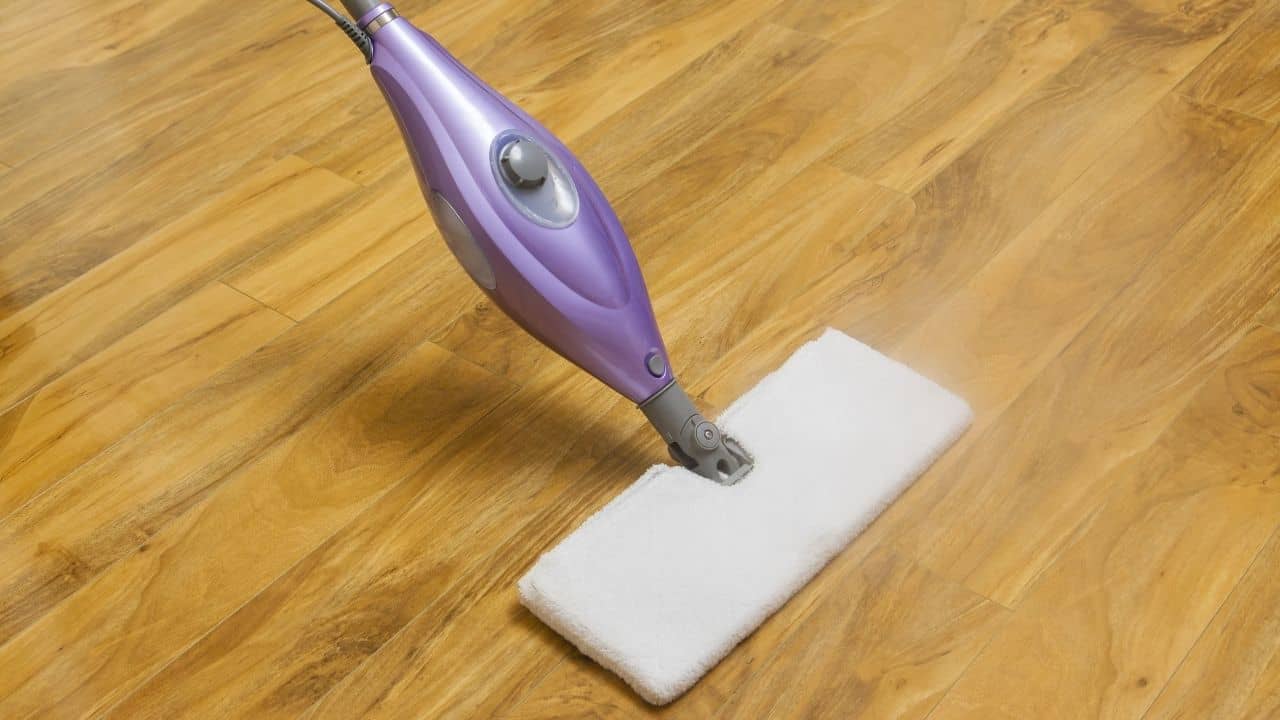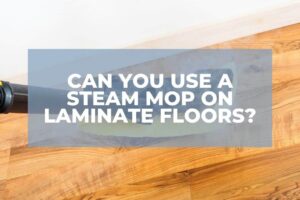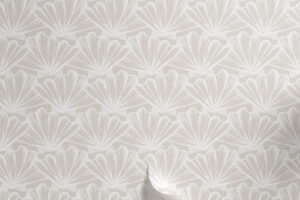Steam mops are such worthwhile and voguish machines for naturally cleaning and sanitizing floors. They use heat and water to achieve their success, and the result is always impressive.

However, the machine is often not safe for some flooring materials due to the heat involved, and there’s a doubt to whether it’s safe for the hardwood flooring.
So can you use steam mops on hardwood floors? We answer that right here. Just stay tuned.
Quick Navigation
The Hardwood Flooring
Hardwood floors are made from hardwood trees. The trees are known to last longer both before maturity and while in use as wood because they’re often denser than softwoods.
This is only one of the strong reasons why they’re used as flooring materials. Another reason is because of their multiple beautiful designs that never seem to get out of fashion.
We both understand that water isn’t often friendly to wood, no matter its type. However, the flooring is often touted to be highly resistant to water.
But does this stand when it comes to the steam mop? Know that tight below (in the following section).
Is The Steam Mop Safe For Hardwood Flooring?
The experts deny that with several reasons to cite. However, manufacturers also insist that the flooring materials are perfectly safe for steam mops. No matter how strong and or persuasive the marketing language may be, it stands that no type of wooden flooring can survive the harsh effects of the machine.
Wood is often highly absorbent, and water makes it bend, warp, harbor molds, and plump. Water gets into hardwood floors via crevices, cracks, and seals. When the water gets inside, it causes damage.
A steam mop can force steam even into hairline cracks on your floors, with the situation getting worse when the hardwood is older or dirtier.
When the floor has more dirt, you tend to concentrate on cleaning that dirty part more than the other parts of the same floor. The smallest of crevices around this part will let in steam, and the effects of water will take effect later.
Likewise, older floors seem to have lost the power of their seals as well as developing more cracks — both that let in water.
Note: not only steam affects your hardwood floor; even heat from the mop does. It causes temperature changes that can lead to warping and peeling.
The Disadvantages
You don’t expect to reap good from the effects of steam on your floor. So pore over the disadvantages below.
You May Void Its Warranty
The manufacturer or retailer of your hardwood flooring is likely to offer a warranty upon purchase. Warranties, however, come with terms and conditions.
For example, a warranty clause may promise to replace or repair the underlying flooring material upon damage by a given set of causes. Most warranties do not often cover for damages by steam mops.
So kindly read through the warranty clause between the lines to see if it promises to repair your floor when you use a steam mop.
The Wood May Start Smelling
Dry rot spores are commonplace, harmless spores. They only get harmful when water/moisture is added to them. Moisture will cause the spores to germinate, and that’s when they start to produce an earthy smell.
Worse still, as the spores continue to grow, they become even smellier. It’s wise to check your floor for any trapped water/moisture the moment an earthy smell hits your olfactory cells.
Steam Is Thinner
Steam is water in a boiled form; thus, it’s lighter and thinner. While water may fail to seep via cracks (or joints on sealed wooden floors), steam will easily find its way inside.
Once inside, steam condenses to leave behind moisture. Moisture will then cause the hardwood to warp, decolorize, and peel. You don’t want this to happen to you.
Watch What You Add To The Mop
The steam mop is already harmful to your floor, though not as much as when a toxic cleaning agent is added. A chemical cleaner will not only catalyze the rate at which water destroys the floor but also cause chaos within the steam mop.
It’s important to know that these mops are often made to work with water alone, although a few chemicals — if used correctly — will not cause any harm to the machines.
A good example is the vinegar solution. It’s an acidic solution that’s popular for helping you achieve sparkling floors. While a few people still endorse it for safety, the solution isn’t still friendly to wood. It etches the wood’s surface to leave it destroyed and looking ugly. Is this what you need?
The Engineered Hardwood Flooring
This one consists of a sturdy backing on whose surface is a thin layer of hardwood material to top its looks. On top of the thin layer is a transparent wear layer that not only protects it from damage but also makes cleaning it a seamless process. The wear layer is waterproof.
If you haven’t heard about it yet, many retailers have listed it among the steam mop-safe types. However, the materials have proved unsafe for several reasons that I explain in the next paragraph.
While this flooring material is waterproof, its seals seem not to resist heat enough. Steam has a lot of heat that can easily break the adhesives that join these materials to create cracks, holes, and crevices.
The holes will then act as an access path for water vapor into the bottom part of the flooring. It’s essential to note that the bottom part of engineered hardwood floors does not feature any form of sealants.
So when water vapor or steam finds access to the bottom, the resultant damage is even worse than on the normal type of hardwood floors.
Are There Special Hardwood Steam Mops?
You’ll bump into quite a number of claims that some steam mop machines suits use on hardwood. It’s unsafe to believe in these claims, especially when you know that the safety of your flooring doesn’t rely on the mop but on how perfectly the floor is sealed.
The machines claimed to have “special” cleaning features for hardwood often feature an extra cleaning cloth that absorbs moisture as you drag it along the floor.
While they allege to do it perfectly, the machines still have precautionary product literature to help keep you off using the machines on floors without top-quality seals. You don’t need to be told that such machines have no “special” feature as they claim.
The Best Cleaning Criteria For Your Hardwood Flooring
So how best do I clean my hardwood floor? Which is the expert-endorsed path to take if the steam mop isn’t safe? Has it worked in the past?
Below is a comprehensive guide to the ideal routine cleaning process for your hardwood floor. Apply the method twice or thrice a week — or more times if your household is usually quite busy. The method has been in use, so you don’t have to worry about its success.
Step 1:
Start by sweeping the floor to get rid of any debris like hair, soil particles, dust, and other stuff. You can as well use a dust mop for the same sweeping job. Likewise, feel free to use the vacuum cleaner for the same purpose, if you have one. Removing such debris will make it simple to take on the next step smoothly.
Step 2
Dampen and wring your mop to remove dripping water from it. You need to ensure that it is damp before using it on your floor’s surface. You can choose to go by distilled water alone or mix the water with a cleaning solution before using it.
The cleaning solution should not have any harmful effects on your floor. Always try and look for solutions that are approved for use with hardwood floors alone. Remember not to use a dripping mop. Otherwise, you’ll end up with a damaged one.
Step 3
Then, use a dry microfiber cloth to wipe off all excess water from the floor. In the process, the floor will emerge shiny and dry with no hazards awaiting.
Please note that in the method above, steam isn’t used; only water and a few approved cleaning products. Still, you ought to see that the floor features tight seams. Remember that water is thicker than steam; hence, it has lesser chances of seeping through small crevices to cause damage on your floor.
The Bottom Line
This article helps you stay safe than sorry. You realize that it’s unsafe to use steam mop on hardwood floors even with no regards to its type. Adding a cleaning solution further makes it more dangerous to your floor.
There’s neither a special steam mop nor hardwood floor that can stand the effect. The only surefire, unmatched way for cleaning hardwood is in this article, and it applies to all types of hardwood floors.
Can you use steam mops on hardwood floors? The answer is a big NO!


